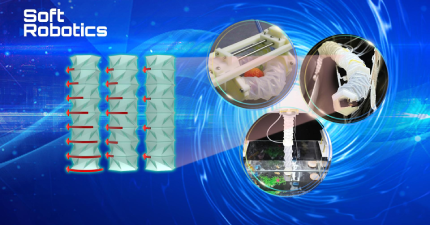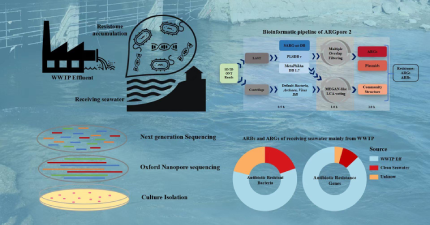Researchers make advances in weldability of high-performance materials in laser additive manufacturing
Dec 08, 2022
As an advanced processing technique, additive manufacturing, also known as 3D printing, has been widely used in a range of sectors such as the industries of aerospace, equipment, automotive and electronic, etc., due to its unique ability in manufacturing high-performance products with complex structures. However, currently the vast majority of the existing alloys in use today cannot be additively manufactured because the melting and solidification dynamics during the printing process lead to intolerable microstructures with large columnar grains and periodic cracks. Thus, tailoring and developing crack-free alloys with superior printability and excellent mechanical performance are the key to further promoting the application of additive manufacturing.
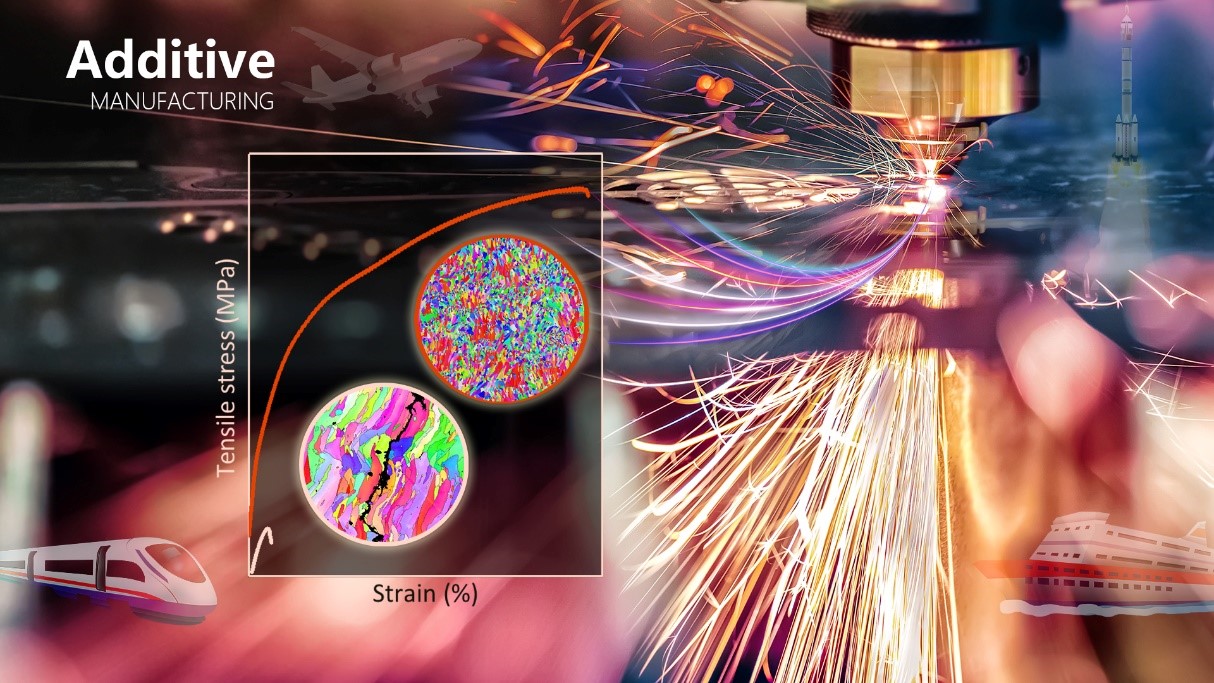
Professor Qiang Zhu’s research group from the Department of Mechanical and Engineering at the Southern University of Science and Technology (SUSTech) has recently made significant advances in the field of laser additive manufacturing of high-performance materials with a focus on crack suppression.
Their results have been published in Additive Manufacturing, Composite Part B: Engineering, Nano Materials Science, and Journal of Materials Science & Technology.
Wrought Al-Cu (2xxx series) high-strength aluminum alloy is one of the most widely used Al alloys in the automotive and aerospace industries. Still, its solidification range is relatively broad, and the hot cracking tendency is serious, making it hard to process. To find a low-cost route to eliminate the cracks and improve the performance of the 2xxx series Al alloys during laser powder bed fusion (L-PBF) has important scientific significance and application value for developing complex lightweight products.
This study demonstrates that the addition of 1 wt.% titania nanoparticles to a 2219 Al alloy could substantially prevent hot-crack formation during L-PBF by significantly refining grains, which resulted in the formation of a nearly fully dense alloy with a high relative density (99.97%). This pronounced grain refinement was due to the solute effect of the Ti element with a high grain growth restriction factor (Q value) instead of the in-situ formation of lattice-matched L12-ordered Al3Ti particles. The processed alloy displayed an excellent combination of high ultimate tensile strength and elongation at both room and elevated temperatures. These properties were comparable to those of its wrought counterpart and greater than those of 2219 Al alloys fabricated via other AM techniques.
This study, entitled “Laser powder bed fusion of nano-titania modified 2219 Al alloy with superior mechanical properties at both room and elevated temperatures: The significant impact of solute,” has been published in Additive Manufacturing.
Mr. Gan Li and Dr. Yuhe Huang from the Department of Mechanical and Energy Engineering at SUSTech are the first authors of this paper.
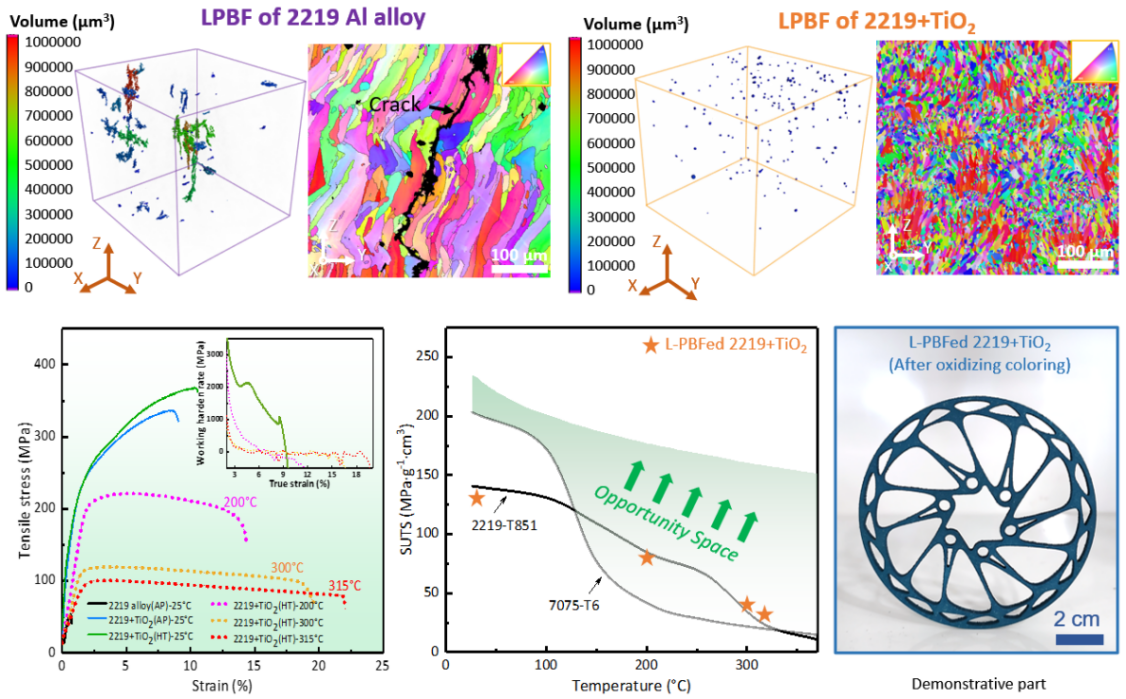
Figure 1. Optimization of the densification behavior, microstructure, and mechanical performance of additively manufactured 2219 Al alloy
Wrought Al-Zn-Mg (7xxx series) high-strength aluminum alloy is a series of aluminum alloys with the highest strength, which is usually recognized as the backbone of aviation materials. However, it also suffers from serious hot cracks and is considered as a typical non-weldable material. Therefore, the researchers designed and developed a novel hybrid grain refiner (solute/ceramic nanoparticles) which can effectively refine grains and enhance the mechanical properties of LPBF-fabricated high-strength aluminum alloys.
Adding Ti/TiN hybrid grain refiners to the LPBF-fabricated 7050 alloy can produce ultrafine grains with an average size of 775 nm, resulting in ultimate tensile strength and ductility of up to 408–618 MPa and 13.2–8.8%, respectively. These tensile properties are comparable to those of conventional wrought 7xxx alloys. During the LPBF process, the hybrid grain refiner exhibited interesting synergistic grain refinements and strengthening mechanisms between the solute and the ceramic nanoparticles. During solidification, not only in-situ particles formed by the chemical reaction of the solute in liquid Al and the externally added ceramic nanoparticles can act as the nuclei of α-Al, respectively, but they can also inhibit the agglomeration of ceramic nanoparticles to promote their nucleation efficiency.
This study, entitled “Novel approach to additively manufacture high-strength Al alloys by laser powder bed fusion through the addition of hybrid grain refiners,” has been published in Additive Manufacturing.
Dr. Xinwei Li from the Department of Mechanical and Energy Engineering at SUSTech is the first author of this paper.
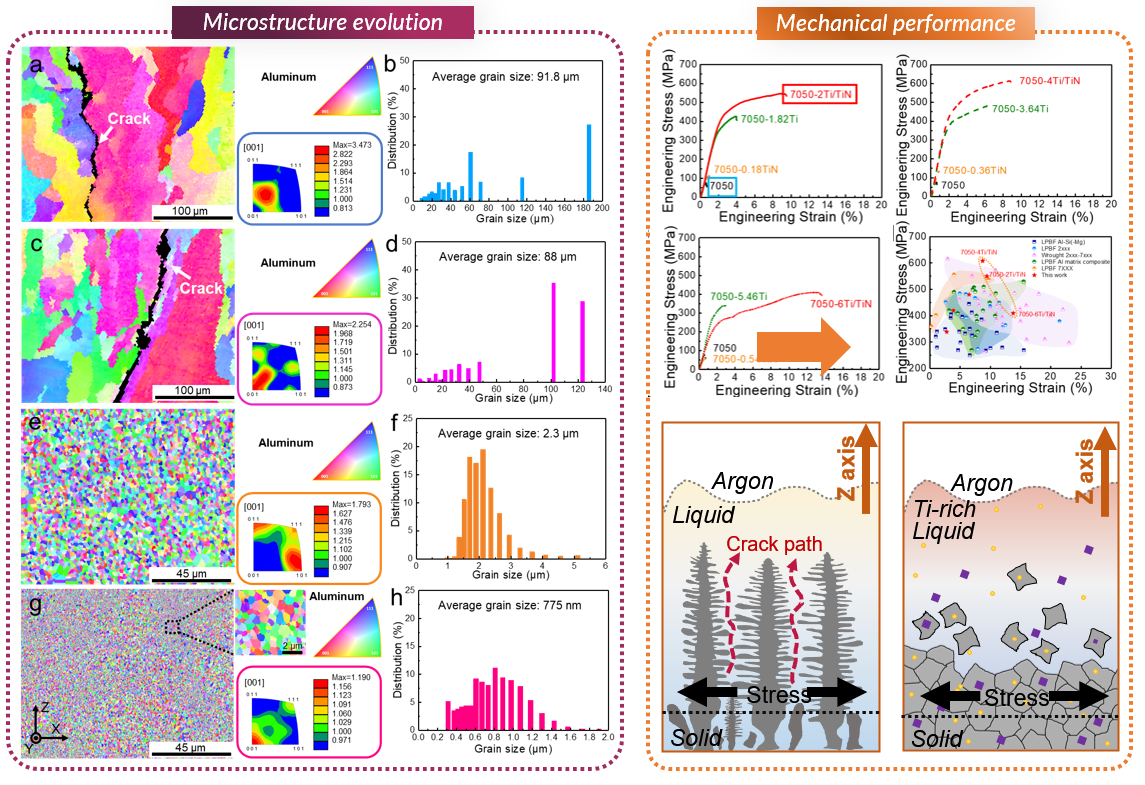
Figure 2. The hybrid refinement strategy leading to the grain refinement and enhanced mechanical properties of the additively manufactured 7050 Al alloy
Superalloy refers to a kind of metallic material that can work for a long time under a high temperature above 600°C. It has been widely used in the high-end field represented by aero-engine and is known as the “pearl on the crown of modern industry”. Similar to high-strength aluminum alloy, a high-performance superalloy usually faces difficulties such as high thermal cracking sensitivity and great difficulty in forming. Nickel-based superalloy Inconel738lc (IN738LC) is a γʹ precipitation-reinforced alloy, which has excellent mechanical properties, oxidation resistance, and thermal stability at temperatures above 800°C. Because of its complex chemical element composition and metallurgical process of laser additive manufacturing, it is considered to be a difficult welding superalloy.
The research team pioneered a “nano-coarsening agent” for selective laser melting after mixing with commercial IN738LC particles. When the cracks of the printing material are eliminated, the grain does not have a refining effect (contrary to the aluminum alloy, the refined organization is often unfavorable for the alloy used at high temperatures). The principle is to add the nanoscale yttrium oxide particles and pronounce the Al element in the alloy to generate fine nanoscale YAM (Y4Al2O9) particles. The Y-point of the particle can be replaced with the Zr atoms in the alloy, eliminating the segregation of Zr at the grain boundary. In addition, the YAM particle is an excellent heat insulation particle, which can effectively reduce the melt’s solidification rate and make the grain coarsen. The yield strength of the IN738LC composite with yttrium oxide particles increased from 615 ± 8 MPa to 633 ± 9 MPa, and the tensile strength increased from 714 ± 11 MPa to 773 ± 5 MPa.
This study, entitled “Y2O3 nanoparticles decorated IN738LC superalloy manufactured by laser powder bed fusion: cracking inhibition, microstructures and mechanical properties,” was published in Composites Part B: Engineering.
Dr. Chuan Guo from the Department of Mechanical and Energy Engineering at SUSTech is the first author of this paper.

Figure 3. Schematic diagram and microstructure comparison of the addition of yttrium oxide particles
The team also tried to eliminate the cracks by changing the printing process. Due to the unique laser working characteristics, the pulse mechanism is widely used in welding technology and can often produce special microstructures. They used a pulsed laser to print the IN738LC alloy while eliminating cracks in the print microstructure. The simulation shows that the pulsed laser can increase the cooling rate of the melt in the printing process compared with the continuous laser, thus achieving the purpose of refining the grain.
In the refined microstructure, some large angle boundaries with high crack sensitivity are transformed into small angle boundaries. In addition, the number of crystal boundaries of the unit length increases, further controlling the cracking and improving the mechanical properties.
These research results, entitled “A comparing study of defect generation in IN738LC superalloy fabricated by laser powder bed fusion: continuous-wave mode versus pulsed-wave mode,” were published in the Journal of Materials Science & Technology.
Dr. Chuan Guo is the first author of this paper.

Figure 4. Microstructure comparison of continuous laser and pulsed laser, and temperature simulation results
Because the additive manufacturing technology involves various physical and chemical processes such as fluid and metallurgy and the composition of nickel-based superalloy is relatively complex, the cracking behavior in additively manufactured products is a common phenomenon, so it is very important to clarify the cracking mechanism and use appropriate means to eliminate cracks. Based on the team’s previous research on the crack defects of high-performance alloys in the additive manufacturing process, they also reviewed the relevant literature and summarized the cracking behavior of nickel-based superalloys in the formation process of additive manufacturing and crack solutions.
The cracks of additive manufacturing nickel-based superalloy can be mainly divided into three kinds: solidification crack, liquation crack, and ductile-dip crack. According to different cracking mechanisms, the team summarized two main crack elimination methods: first, change the forming process to control the material solidification and temperature gradients, such as parametric design, pulsed laser, and substrate preheating. Second, change the control element segregation of alloy components or the final structure of solidified microstructure, such as alloy design, using metal matrix composite materials, material microalloying, etc. In addition, to promote the future development and commercial application of additive manufacturing nickel-based superalloys, the future fields are also clarified. They explored the process-structure-performance relationship of nickel-based superalloy parts with different complex structures, customization and developing new crack-free nickel-based superalloys for additive manufacturing, and formulating specifications and standards for additive manufacturing of nickel-based superalloys.
Their results, entitled “Additive manufacturing of Ni-based superalloys: residual stress, mechanisms of crack formation and strategies for crack inhibition,” were published in Nano Materials Science.
Dr. Chuan Guo and Mr. Gan Li are the first authors of this paper.
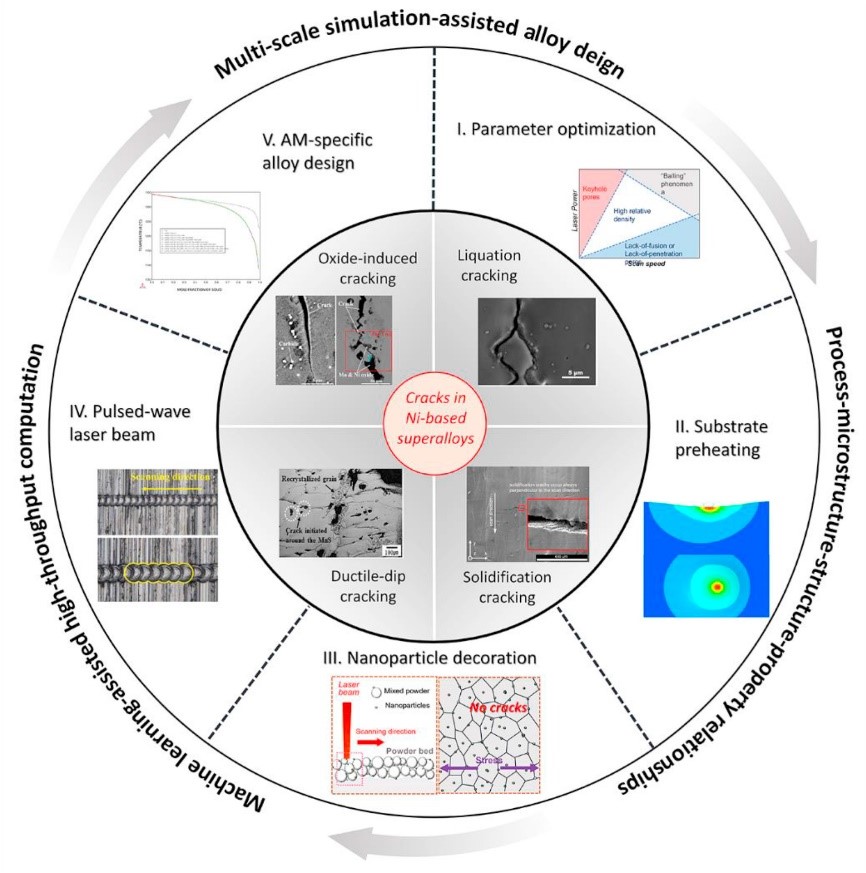
Figure 5. Cracking mechanisms and solving methods of Ni-based superalloy during additive manufacturing
The above research works were supported by the National Natural Science Foundation of China (NSFC), Shenzhen Key Laboratory, and Shenzhen Peacock Team Project. The authors also acknowledge the support of SUSTech Core Research Facilities.
Paper links (In order of appearance above):
Additive Manufacturing:
Additive Manufacturing:
Composites Part B: Engineering:
Journal of Materials Science & Technology:
Nano Materials Science:
Latest News
Related News



